the mineral exhibition of the NHM Vienna / pt. 1
by Robert Kunze

The museum
The museum of natrual history in Vienna is located in the center of the Austria capital. Based in a very large, historic building it shows very relevant collections of biology, geology, anthropology, archeology and many more.
The building itself is about 270 years old and looks like a palace. Some of the rooms are very large and capable of presenting even large collections or exhibits.
The museum is open all days, it is ideal for visiting also with children.
Click here to vitit the museums’ website.
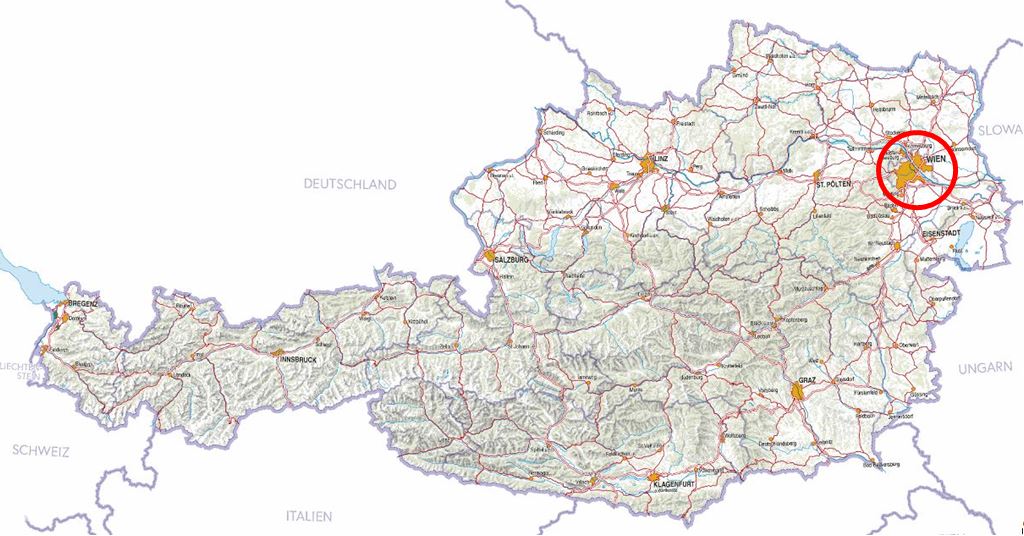

The mineral collection
The mineral collection is a centerpiece of the exhibitions. In several huge rooms, decorated with large historical pictures, the pieces are presented.
The display cases are historical throughout, made of dark wood. Hundreds of linear meters of display cases house thousands of mineral specimens. However, this also means that the lighting cannot meet today’s requirements for full illumination of the mineral specimens.
Since the collection was established more than a hundred years ago, Austria was then still an empire and much larger than today, one finds there especially many specimens of the former empire.
Many minerals on display come from deposits that are no longer located in Austria, but in Poland, the Czech Republic, Slovakia, Hungary, Romania, Slovenia or Italy.
Since these are often very old, historical pieces, the German name of the locality is mentioned throughout. An example is Felsöbanya, today’s Baia Sprie in Romania. You will be amazed, as I was, what mineral specimens were found in the respective deposits, often in exceptional quality.
Another difference from today’s way of collecting: The mineral specimens do not necessarily meet today’s demands in terms of aesthetics.
Only rarely will you find a piece that shows only one crystal on a small piece of matrix (today’s demand for aesthetics). But exactly this makes the old pieces mostly distinctive.



My visit of the collection
I visited the mineral collection for about 3 hours. In this time I got a good overview, but I could not look at every piece more closely. You will know this, with time the eye gets tired and it is hard to concentrate.
I tried to find the pieces that were interesting for me and also to take pictures. This is not easy, because of the shape of the showcases many pieces are not well lit. Of course, this also shows in the pictures (I had to use a mobile phone). The quality of the photos is not comparable to pieces in new display cases or even studio photos.
I hope it is still interesting to look at pieces of such an old collection.
In this first part are the pictures of about 70 specimens, more articles with pictures from the collection will follow.
I hope you’ll enjoy! Robert
Aragonite (11 photos)








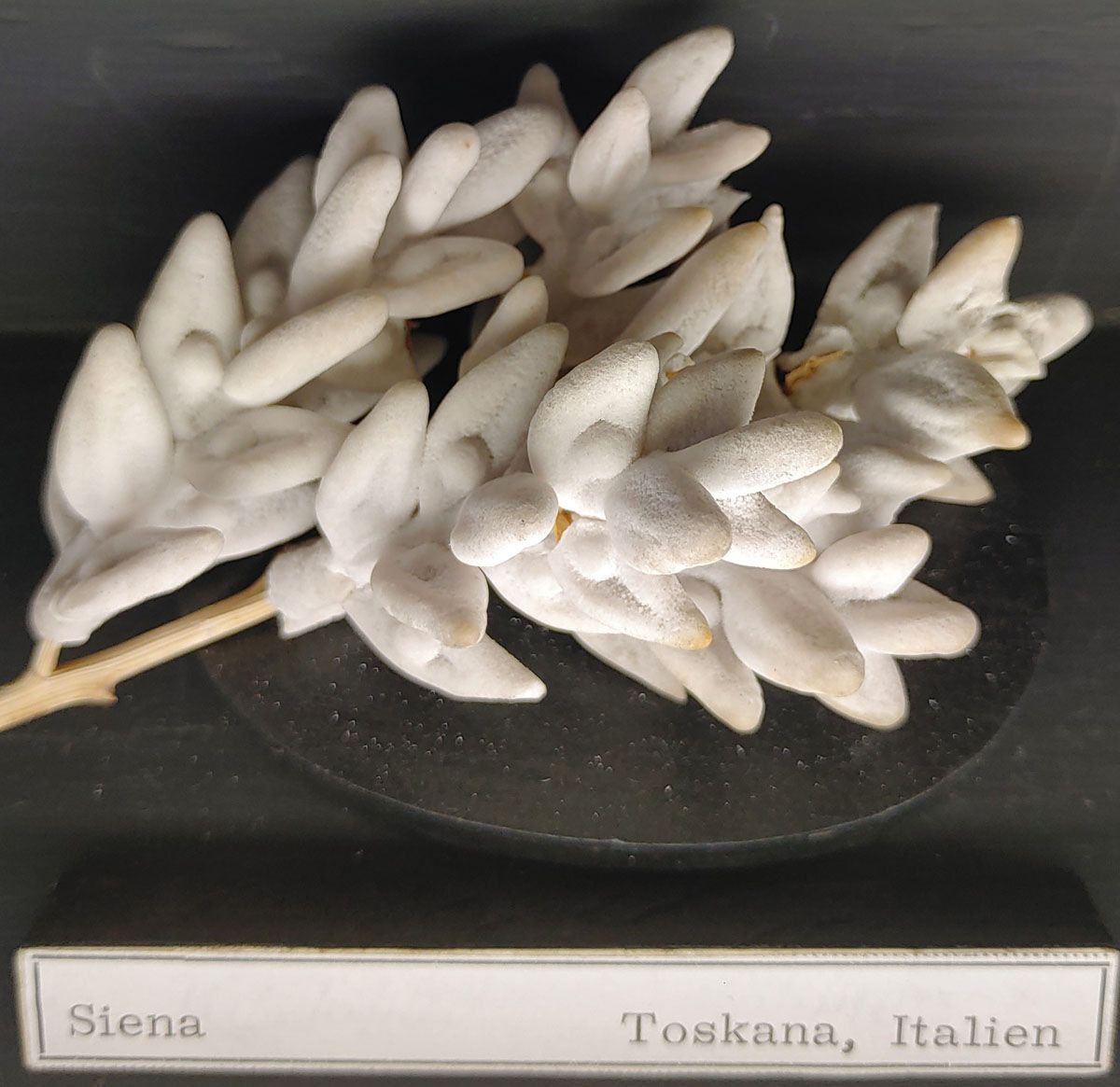


Arsenic (1 photo)

Bismuth (1 photo)
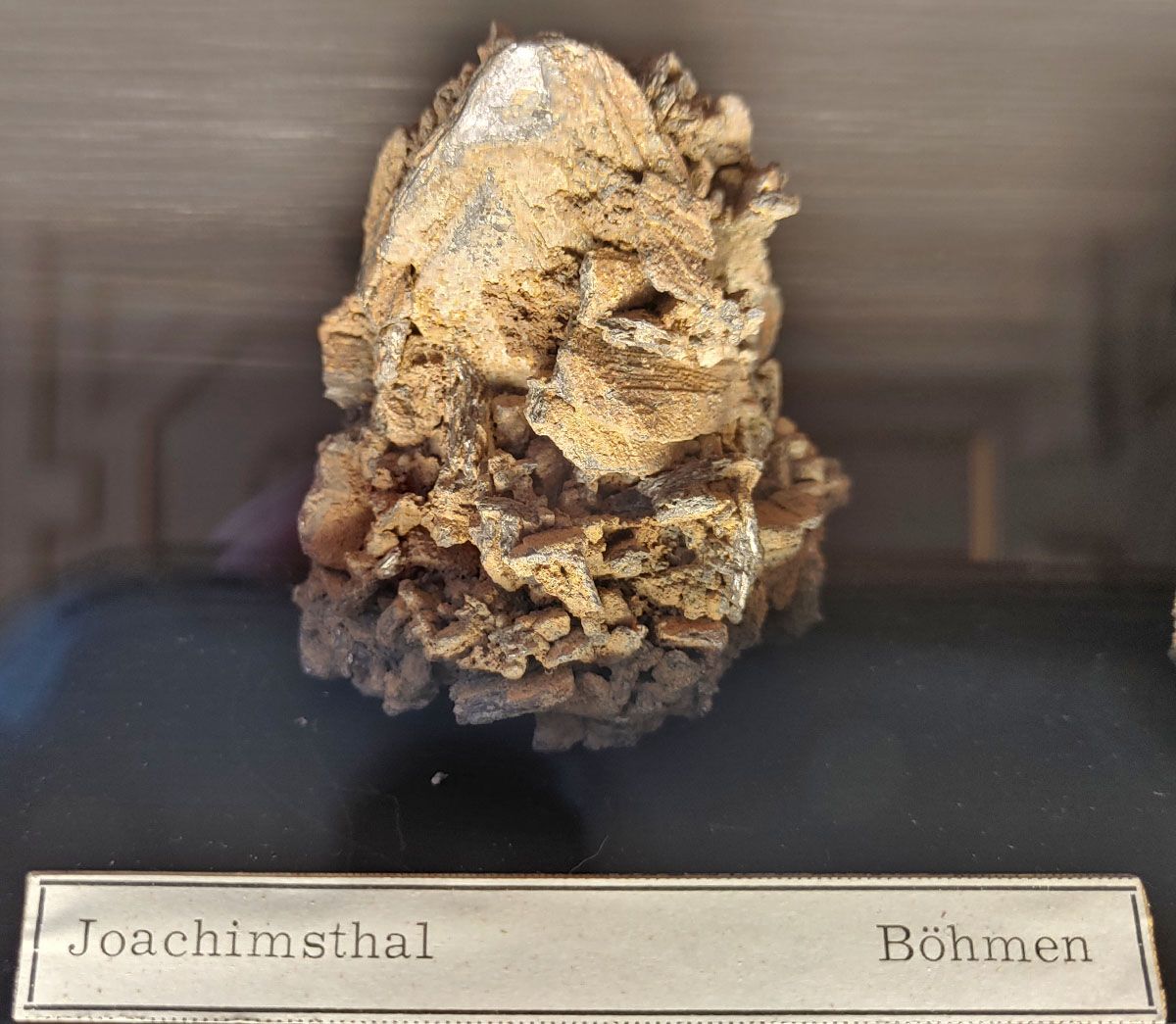
Calcite (30 photos)






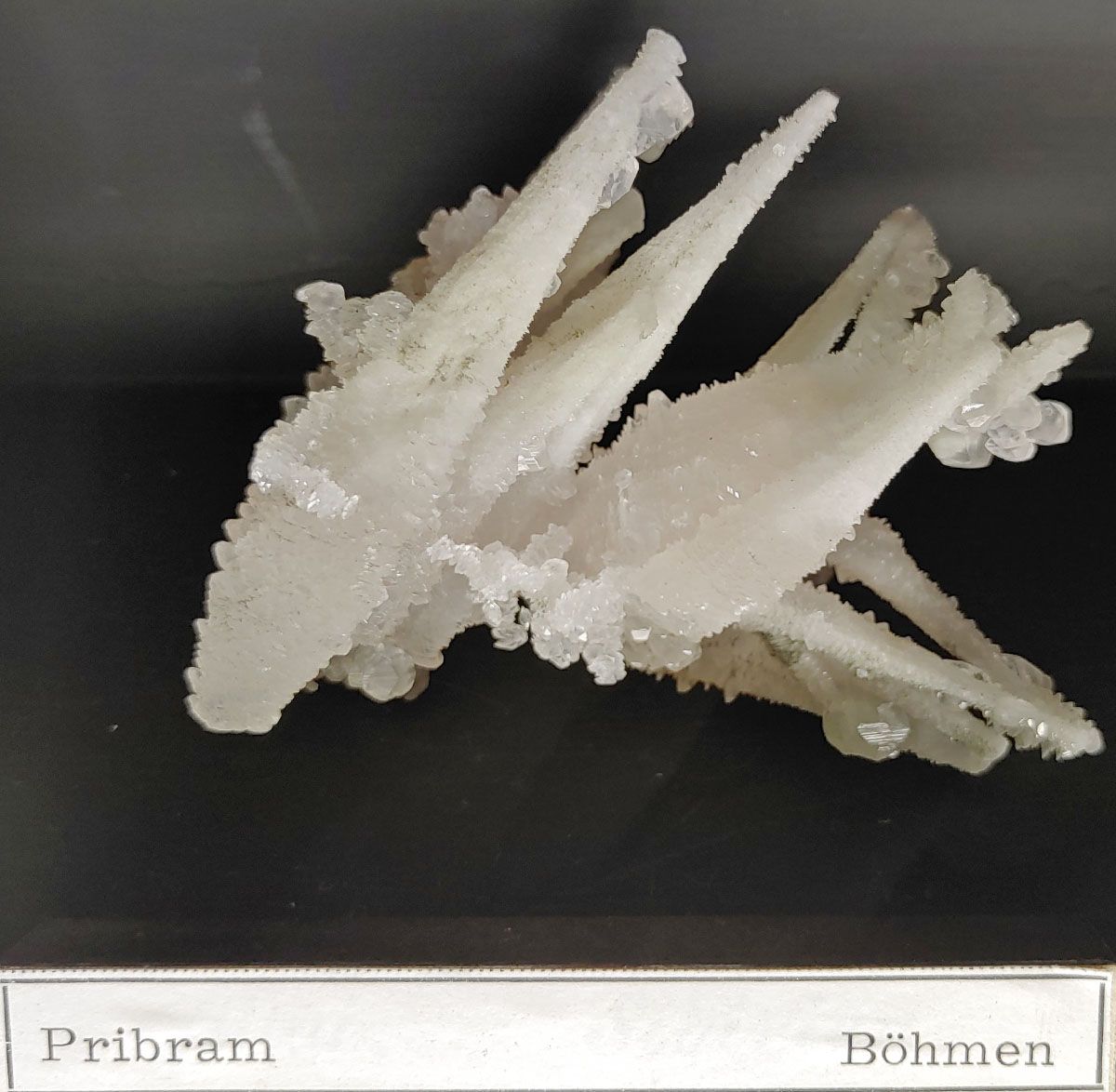











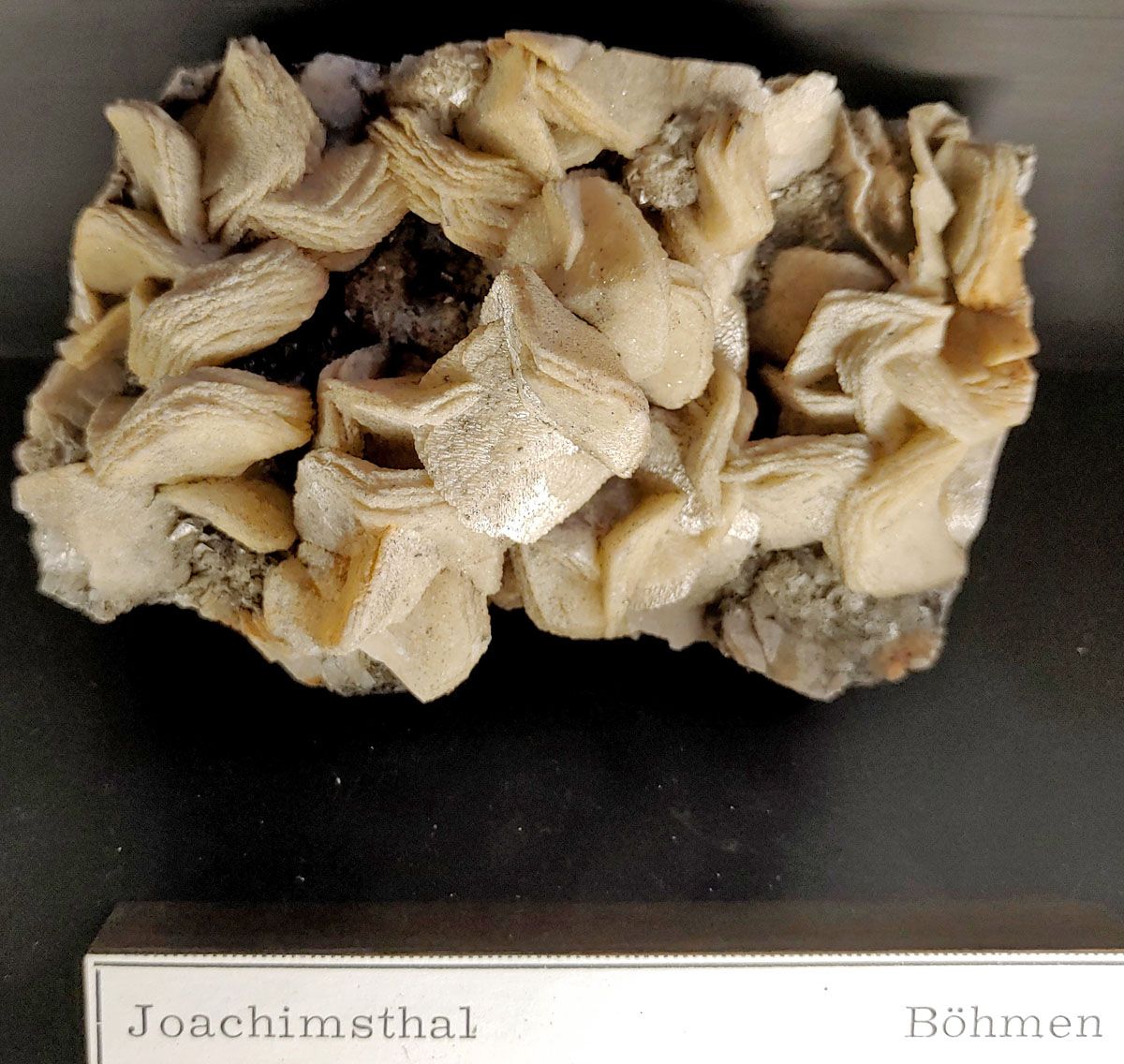











Cassiterite (5 photos)





Cerussite (8 photos)




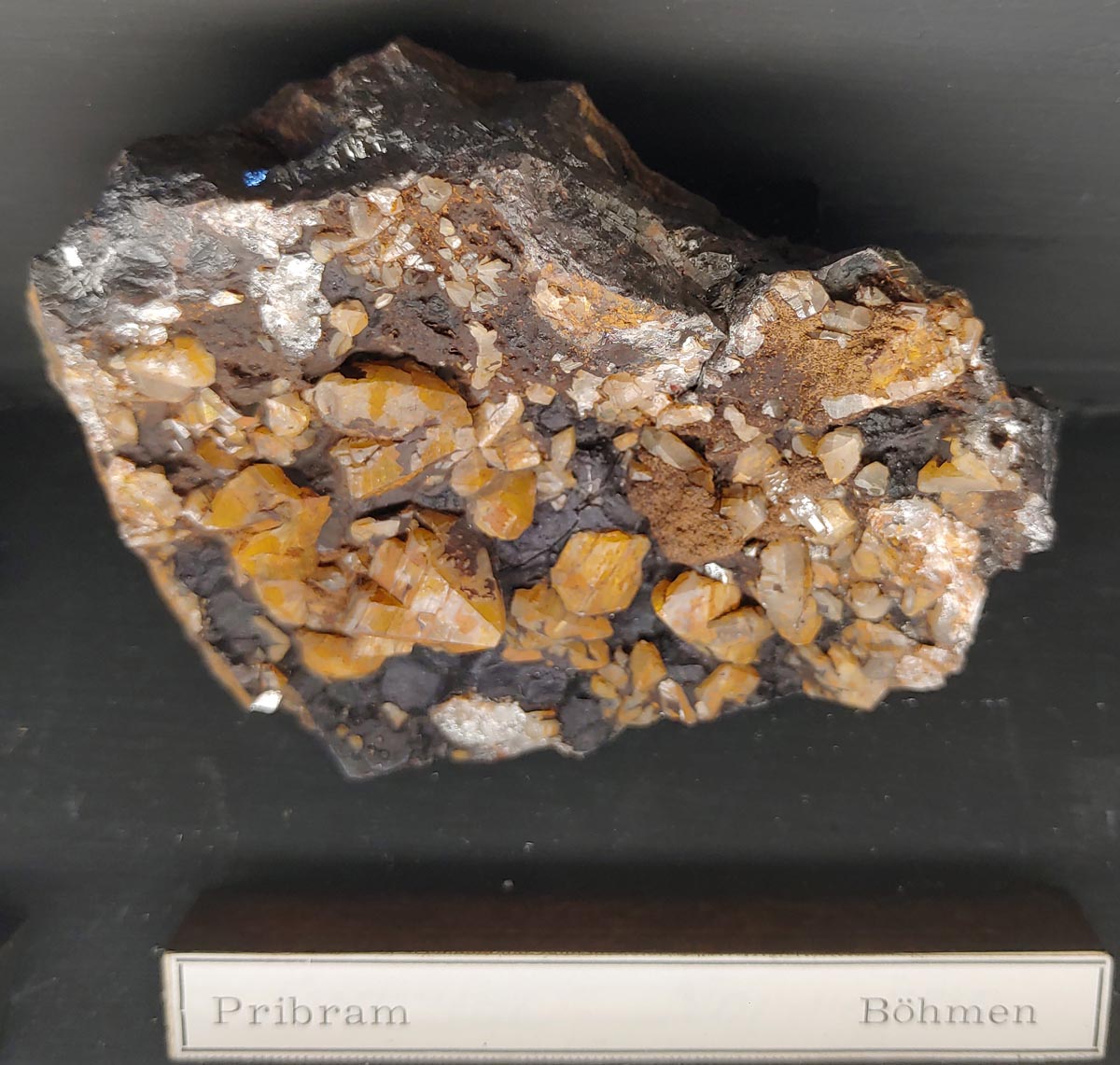



Goethite (7 photos)







Lithiophorite (1 photo)

Psilomelan (3 photos)



Pyrolusite (1 photo)

Rhodochrosite (2 photos)
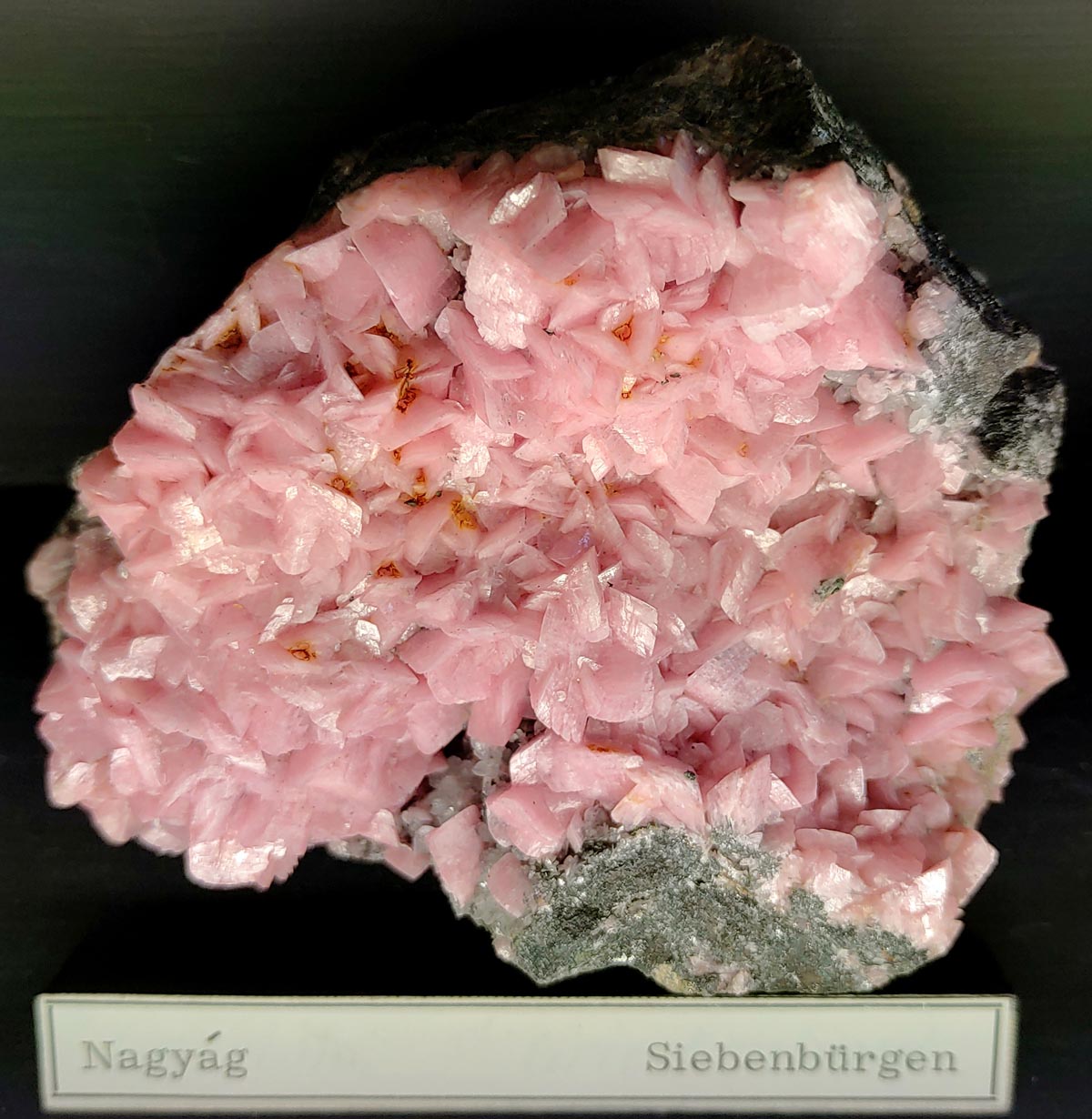

This was the 1st part of photos from this famous collection. I hope you enjoyed. Thank you very much!
Robert

Wow. Thanks so much Robert. My day is enriched. Cheers, Scott, Canada
Thank you very much for your feedback, Scott!